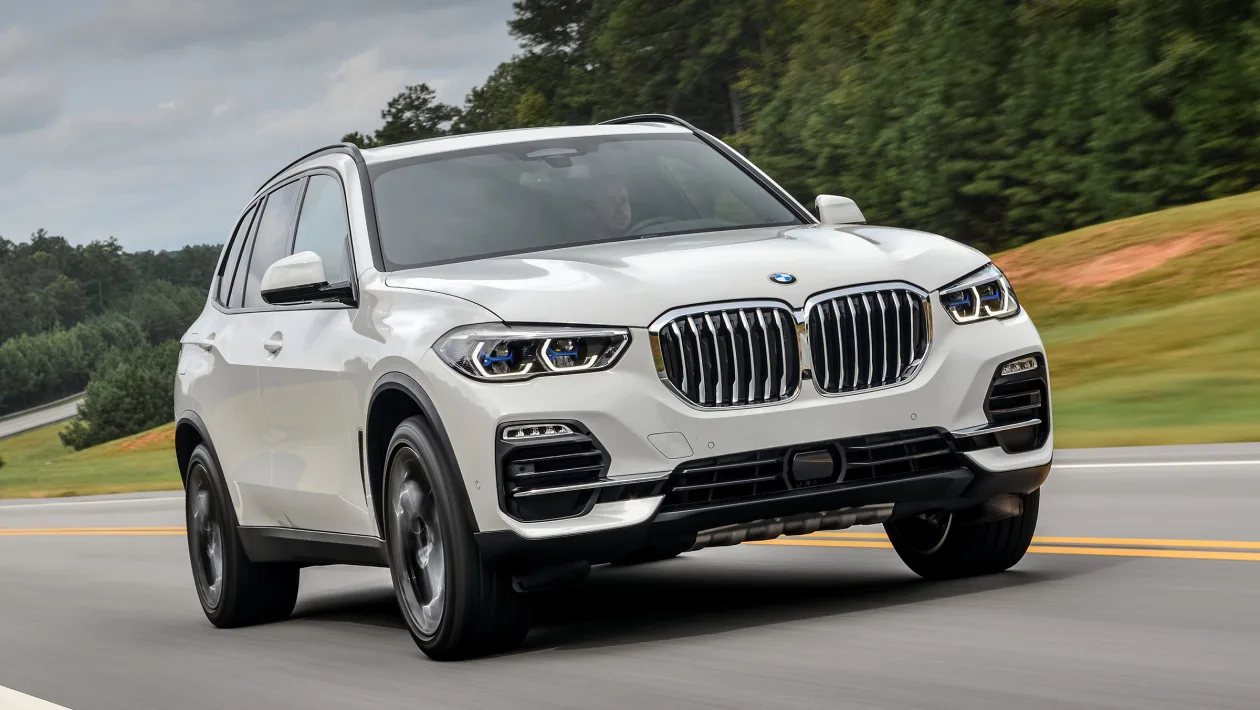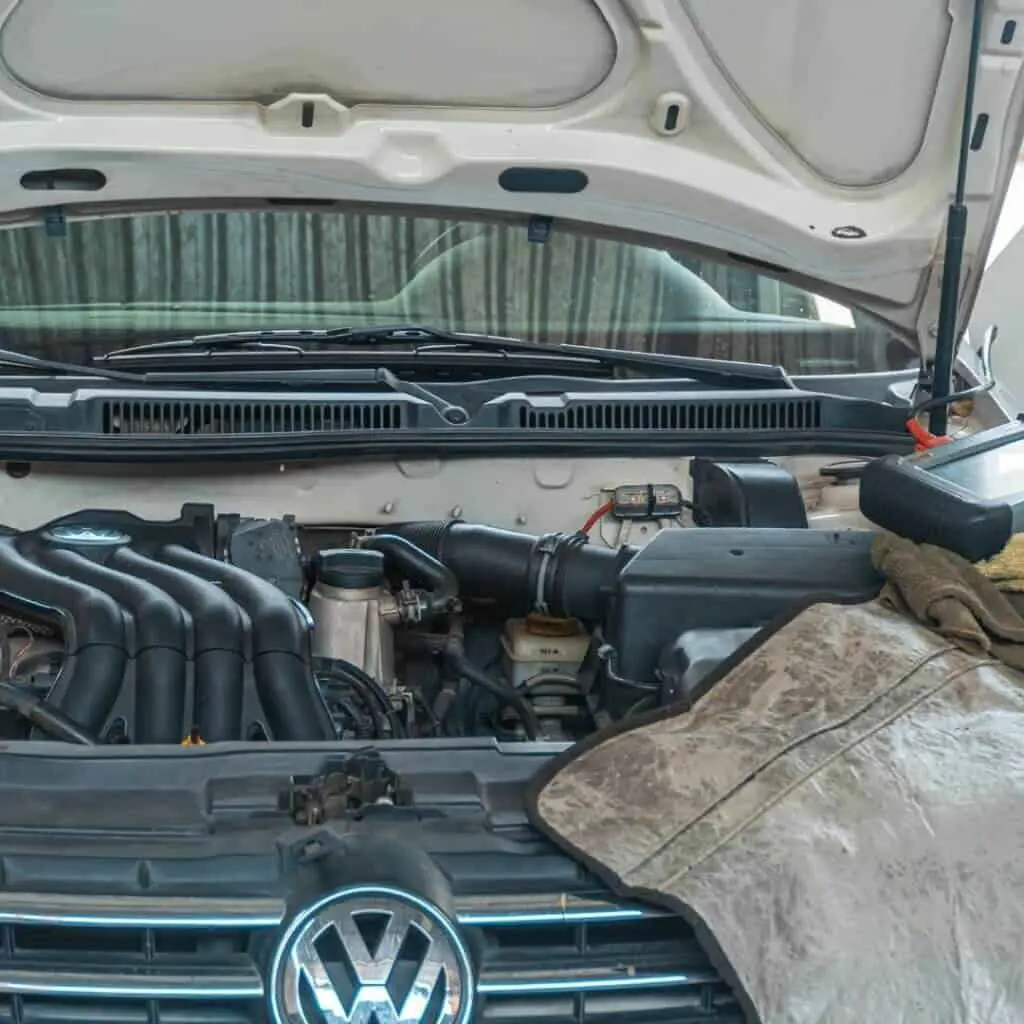Are you familiar with the BMW X5 problems?
The BMW X5 is a standout option in the large SUV category because of its excellent performance, usefulness, and innovative technology. The BMW X5 was completely redesigned and switched to BMW’s modular longitudinal platform when it was introduced in 2018.
Its base engine is called the xDrive30d. It is a 3.0-liter, 6-cylinder diesel engine with 294 horsepower with 0-62 mph acceleration in 6.1 seconds. The car also has a ton of low-end power for hauling.
Like other X5s, it boasts an eight-speed automatic transmission with fast shifts. This makes it more responsive than the comparable Audi Q7 45 TDI.
In addition to being a useful and adaptable people carrier, the 2023 X5 also offers athletic performance that rivals some non-SUV sports cars. The vehicle boasts a feature-rich infotainment system, a well-designed cabin that is pleasant, and a large cargo capacity [1].
The BMW X5 is a sporty car with the ideal balance of high performance and luxury. But compared to other BMW models, the X5 receives the most complaints.
Most frequently, fuel system issues, electrical issues, or timing chain difficulties cause the BMW X5’s engine to stall. Similarly, transmission and steering issues are frequent.
Finally, the battery may wear out prematurely if the automobile has coolant or sunroof leaks.
CarComplaints classifies the 2011 BMW X5 as the worst model year based on several criteria, including repair costs and average mileage when problems arise.
The model has received the most general complaints. The 2011 BMW X5 also has the most reported stalled while driving issues [2].
Most Common BMW X5 Problems

Common issues with the BMW X5 include engine stalling in some older models, transmission problems, steering issues, and water leakage in models equipped with sunroofs. Furthermore, serious software bugs are reported on the 2021 BMW X5 Hybrid version.
- Engine Stalling
One of the most frequently encountered issues with the BMW X5 Diesel is engine stalling. The driving experience can be ruined by an abrupt engine stall. This problem, which affects some 2011 models, is thought to be the BMW X5’s most significant shortcoming.
Although the car could stall at far higher accelerations, some BMW X5 cars stalled at slow speeds and low accelerations. The engine can sometimes be restarted with some momentum.
Engine stalling must be fixed immediately because it can be quite dangerous, especially in traffic or on highways.
BMW acknowledged that the 2011 BMW X5’s engine has a defect that caused it to suddenly stall or seize. The engine control module turned on and the safe mode was triggered when the engine stalled.
Depending on the circumstances, the engine warning light might or might not come on [3].
The BMW X5’s engine stalls for several reasons. This frequently occurs as a result of a sensor or electrical circuit malfunction that prevents the engine from operating properly.
Furthermore, a fuel supply issue or faulty combustion also contributes to the engine stalling issue [4].
While in other uncommon instances, the issue that was causing the BMW X5’s engine to stall was discovered in the exhaust system. The majority of BMW X5 owners couldn’t fix the problem, and many had to replace the engine entirely.
- Water Leakage Issue
Another notorious issue with the BMW X5 is its leaky sunroof. On rare occasions, water would spill from the sunroof’s drain tubes. This may occur during a car wash or a heavy downpour.
The 2008 BMW X5 is prone to this issue. Normally, drain tubes prevent water from collecting on the sunroof [5]. But several 2008 BMW X5 cars have tubes that can let water into the cabin.
While a drenched automobile carpet might need to be replaced if it is damaged, a wet floor mat is an inconvenience. Some owners have also mentioned that water frequently flows into the front passenger seat, damaging the electrical system.
The ignition system may be damaged as a result of the water leaks, making it impossible for the 2008 BMW X5s to start. The electrical door locks on a lot of cars became stuck, making it impossible for the drivers to get in or out.
When such an SUV’s interior dries off, it reverts to its former state. However, in most of these instances, the electrical and electronic components need to be replaced.
To solve this issue, check for any blockages or cracks and clear the drainage pipes that exit the vehicle’s top. The drain tubes can be cleaned either by air or wire [6].
Additionally, look for any blows, holes, or damage in the seals surrounding the sunroof.
- Transmission Issues
The automatic transmissions found in the X5 variants have been known to occasionally cause issues. Numerous BMW X5 owners have voiced complaints about problems like jerky shifting and flashing transmission warning lights.
Some BMW X5 models from 2011 may experience a mechatronic sensor collapse without any warning. The transmission may change without acknowledging the inputs from this sensor.
Moreover, some 2012 BMW X5 cars develop vibration issues as the transfer case wears out. Several 2006 models of BMW X5 have been reported to suddenly change gears while moving. Unfortunately, fixing gearbox problems could be expensive.
The BMW X5 enters limp mode when the gearbox fluid level is low [7]. Usually, the bridge seal adapter or the mechatronic sleeve is to blame for the low transmission fluid issue.
On rare occasions, the sleeve connector leading from the transmission unit might leak transmission fluid. The fluid level might decrease as a result of this.
Additionally, the seal adapter could fracture, leading to a variety of transmission problems in the BMW X5. The car might require a new transmission or the repair of the damaged one to address this issue.
- Powertrain Issues
Numerous complaints regarding the 2021 BMW X5 Hybrid’s powertrain problems have been submitted to the NHTSA [8].
One owner of a BMW X5 reports that the moment the driver’s door is opened, the X5e hybrid shuts down. According to reports, software bugs are the cause of these issues.
The engine, transmission, and drivetrain are all parts of a vehicle’s powertrain system. A well-maintained powertrain system will always operate at its peak efficiency to the manufacturer’s specifications. Its proper fuel and oil consumption efficiency will make driving a car easier.
Overheating, strange handling, shaking/vibrating, whining, and growling sounds are all signs of a broken powertrain. You should be more concerned if your car is loud.
A failed powertrain is one of the most expensive repair costs in the automotive business. Your engine/transmission would need to be disassembled and rebuilt by a mechanic, which would take time.
- Steering Issues
According to complaints made to the NHTSA, the 2019 BMW X5 has several steering problems. The steering of the BMW X5 jerks back and forth when traveling at any speed in temperatures below 10 degrees Fahrenheit.
This makes the vehicle challenging to drive. This issue won’t be resolved even if sophisticated safety measures like lane-keeping assist are disabled.
If you have the expertise, you can update your BMW software to resolve this issue. Otherwise, you should drive your car to the BMW service center for servicing.
Read Also: Mini Cooper Problems
Conclusion
The BMW X5 is well-known for performing exceptionally well in the luxury midsize SUV market. It stands out in the class with its seriously potent engine options, sporty driving, and well-tuned cabin with plenty of cargo space.
The X5’s capability to transport both people and cargo astounds. Without a doubt, the combination of enjoyment and practicality makes the price worthwhile.
However, the X5 has received the most complaints out of all the BMW models. From models 2008 to 2013, the X5 received the most expensive repairs for the engine, electronics, and transmission. The model has also seen problems with the steering, powertrain, brakes, leaking sunroof, and airbags.
Since these issues afflicted the SUV, the BMW X5 has become better. Even while things are going well, there are still some problems with the engine in the latest versions. The number of complaints has, however, drastically decreased.
Even though the BMW X5 takes more maintenance than a typical crossover SUV, it nevertheless offers excellent performance and a ton of comfort.
To better comprehend the BMW X5’s ownership expenses, it is crucial to be aware of its challenges. Knowing what issues your X5 has will also help you avoid pricey repairs in the future.
Read Next: Genesis GV70 Problems




